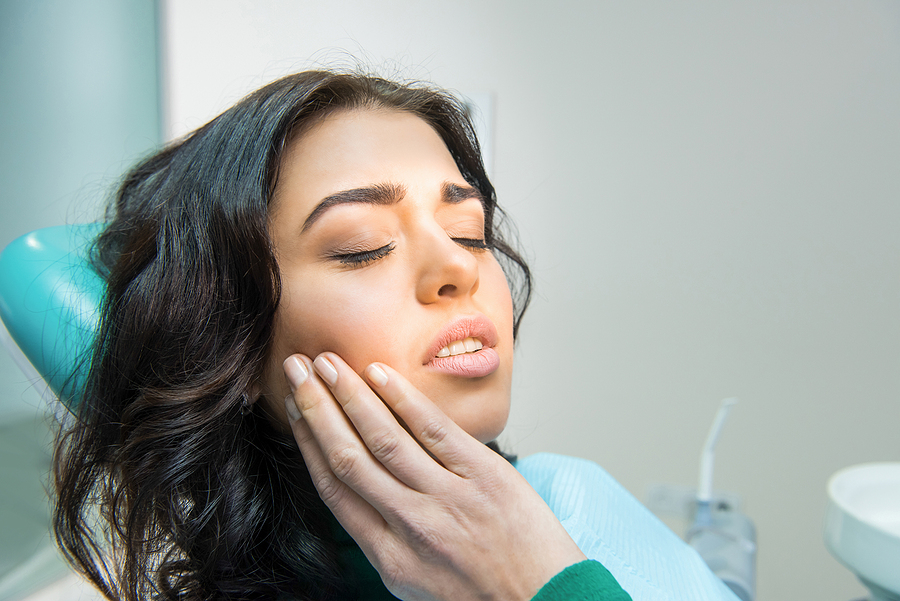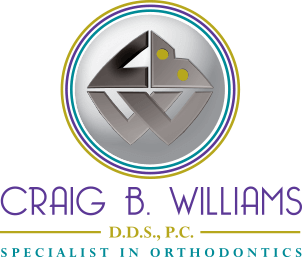EMAIL OR CALL: (404) 243-3210

How Long Will I Need To Wear Braces? Understanding Your Treatment Timeline
Are you ready to embark on the journey toward a straighter smile? If so, you're not alone. Many people in Decatur, GA, a...

Clear Aligners for Busy Professionals: Discreet and Convenient
Are you a busy professional juggling meetings, deadlines, and social commitments? If so, the idea of straightening your ...

Balancing Braces with a Busy Life: Tips for Working Adults
Adulting can be a juggling act, especially when you add braces to the mix. While straightening your teeth is a fantastic...

Orthodontics in Your 30s, 40s, and Beyond: It’s Never Too Late
Orthodontics isn't just for kids anymore. If you've found yourself wondering whether it's too late to achieve that perfe...

What Happens If You Hit Your Face While Wearing Braces?
Braces are a common rite of passage for many teens and adults alike. They work wonders in straightening teeth and perfec...

How Long Do You Really Need to Wear Your Retainer?
If you've just completed your orthodontic journey, congratulations! You’ve transformed your smile and boosted your confi...

Top Mistakes That Lead to Orthodontic Emergencies (and How to Avoid Them)
Orthodontic treatment can be a transformative journey, turning misaligned teeth into a stunning smile. However, it’s not...

What is Dentofacial Orthopedics? A Guide to Correcting Jaw and Facial Growth
Are you curious about how jaw and facial growth can impact overall health and appearance? If so, you're not alone. Many ...

Braces-Friendly Eating: What to Avoid and What to Enjoy
Braces can feel like a rite of passage for many, a journey toward that stunning smile you’ve always wanted. But with thi...

Broken Braces? Here’s What You Should Do Next
Having braces can feel like a rite of passage for many—an exciting journey toward a perfect smile. But what happens when...

Why an Electric Toothbrush is a Game-Changer for Braces Wearers
Braces can be a transformative journey for many, helping to create that perfect smile we all dream of. But along with th...

Understanding Head and Neck Pain: Causes, Treatments, and When to Seek Emergency Care
Head and neck pain can disrupt daily life, making simple activities like turning your head, chewing, or concentrating ch...

When Should You Take Your Child to the Orthodontist? Understanding the Right Time for Evaluation
Parents often wonder when to schedule their child's first orthodontic visit. While many people associate braces and othe...

Transform Your Smile with Clear Aligners in Decatur, GA
A straight, radiant smile can do wonders for your confidence, but traditional metal braces may not appeal to everyone. C...

Signs You May Need Orthodontic Treatment (Even as an Adult)
Are you an adult who has been hiding your smile? You’re not alone. Many people think orthodontic treatment is just for k...

Self-Ligating Braces In Decatur, GA: A Modern Solution for a Straighter Smile
Many share the goal of achieving a beautiful, straight smile, but traditional braces may not always feel like the best o...

How Early Should I Take My Kid To The Orthodontist
When it comes to your child's dental health, timing can make all the difference. Have you ever wondered how early you sh...

How to Care for Your Clear Aligners: Tips for Success
Clear aligners have revolutionized the way we think about orthodontics, and if you're in Decatur, GA, you might be exper...

A Comprehensive Guide to Self-Ligating Braces in Decatur, GA: Advantages and Treatment Options
Orthodontic treatments have come a long way for those looking to achieve a straight, beautiful smile. Among the modern s...

What Is Surgical Orthodontics? A Complete Guide
Are you struggling with misaligned teeth or jaw issues that just don’t seem to improve with traditional orthodontics? If...

How Long Does It Take to Heal from Orthognathic Surgery?
Orthognathic surgery is a transformative procedure that can significantly improve both function and aesthetics for those...

How Surgical Orthodontics Can Improve Facial Aesthetics and Function
When it comes to achieving a radiant smile and balanced facial features, many people overlook the transformative power o...

Who Needs Surgical Orthodontics? Signs You Might Be a Candidate
Are you struggling with bite issues that traditional braces just can’t seem to fix? If so, surgical orthodontics might b...

WHAT IS MALOCCLUSION?
The term malocclusion refers to misalignment of teeth. You may have been born with malocclusion, so your teeth simply gr...

TIPS TO AVOID COMMON PROBLEMS ASSOCIATED WITH BRACES
While braces play an important part in helping to create a healthy mouth and teeth, you might experience a few side effe...

MEMORIAL DAY AND GETTING READY FOR SUMMER
Memorial Day didn't become an official holiday until 1971, but Americans started gathering annually in the spring to rem...

Bracing for the Heat? Try These Braces-Friendly Summer Treats!
Summer means sun and heat and delicious, frosty treats to keep you cool while you’re enjoying the sun and heat. If you’r...

THE MANY BENEFITS OF BRACES
It’s true that orthodontic braces can give you a beautiful smile. But did you know there are other benefits of having br...

RETAINER HACKS
Even with the best of care, accidents can happen, and your retainer, unfortunately, is not immune. Of course, you need t...

BRACES-FRIENDLY SNACK IDEAS
Wearing braces limits some of the snacks you can eat. However, you still have plenty of choices for fun and healthy food...

TIPS TO HELP YOU BEAT THE HEAT THIS SUMMER
The dog days of summer are upon us, and with the temperatures soaring, our team at CBW Orthodontics wants you to be extr...

Achieve a Confident Smile with Clear Aligners in Decatur, GA: A Modern Orthodontic Solution
A confident smile can transform not only your appearance but also your self-esteem. Clear aligners have emerged as a pop...

HELPFUL HYGIENE TIPS FOR PATIENTS WHO WEAR BRACES
Today, Dr. Williams and our team thought we would offer a few tips for our patients currently undergoing orthodontic tre...

ORTHODONTICS: FROM TOOTH FAIRY TO RETAINER
You might be surprised to learn that Dr. Williams and our team recommend an orthodontic appointment even before your chi...

SPRING CLEANING
Just like that, it’s almost summertime. As the spring season ends, perhaps these lighter, brighter days are inspiring yo...

OVERBITE OR OVERJET?
The words “overbite” and “overjet” certainly sound similar. Both conditions concern your front teeth. Both conditions fa...

TEENS AND GUM DISEASE
You have a lot going on. School. Sports. Activities. Family. Friends. Teens lead busy lives and have busy schedules, so ...

KEEP THAT CANDY AT BAY DURING YOUR TREATMENT!
Now that you have braces, it is more important than ever to maintain good oral hygiene during your treatment, as Dr. Wil...

SNOWBALL EFFECT
Winter and its snowball fights are behind us, true, but there might be another kind of snowball heading your way. When y...

A HELPFUL SITE ON ORTHODONTICS
As you are undergoing orthodontic treatment, our team at CBW Orthodontics would like to point you to a helpful website. ...

AVOID BRUSHING AFTER EVERY SINGLE MEAL!
Here is some surprising yet worthwhile advice you might be hearing for the first time: Brushing after a meal can be incr...

IS ORTHODONTIC TREATMENT JUST FOR STRAIGHTENING TEETH?
A lot of patients ask us why Dr. Williams and our team at CBW Orthodontics work tirelessly to give our patients straight...

JUST ADD WATER
One of the many benefits of your clear aligners is that you can remove them to eat. You should brush after every meal, j...

CRUSHING THE ICE-CHEWING HABIT
It's a habit many people have and not only can it be annoying to the people around you, it can be detrimental to your de...

WHAT’S THE FUNCTION OF FUNCTIONAL APPLIANCES?
Whenever we bite down, we’re applying force with our jaw muscles. Functional appliances direct these forces to create he...

TEAM DARK CHOCOLATE
Valentine’s Day is the holiday to celebrate all the treasured relationships in your life. It’s a time to honor love in a...

QUESTIONS, QUESTIONS…
When beginning orthodontic treatment, most patients ask Dr. Williams and our team a lot of questions about what to expec...

MY MOUTH IS DRY. WHAT CAN I DO?
Nobody likes a dry mouth. It is an uncomfortable and sometimes oddly unexplainable sensation that most people like to av...
Visit Our Office
Decatur, GA
2855 Candler Road, Suite #12, Decatur, GA 30034
Email: cbwortho@drcraigwilliamsortho.com
Request An AppointmentOffice Hours
- MON9:00 am - 5:00 pm
- TUE9:00 am - 5:00 pm
- WED9:00 am - 1:00 pm
- THU9:00 am - 5:00 pm
- FRI9:00 am - 1:00 pm
- SATClosed
- SUNClosed
